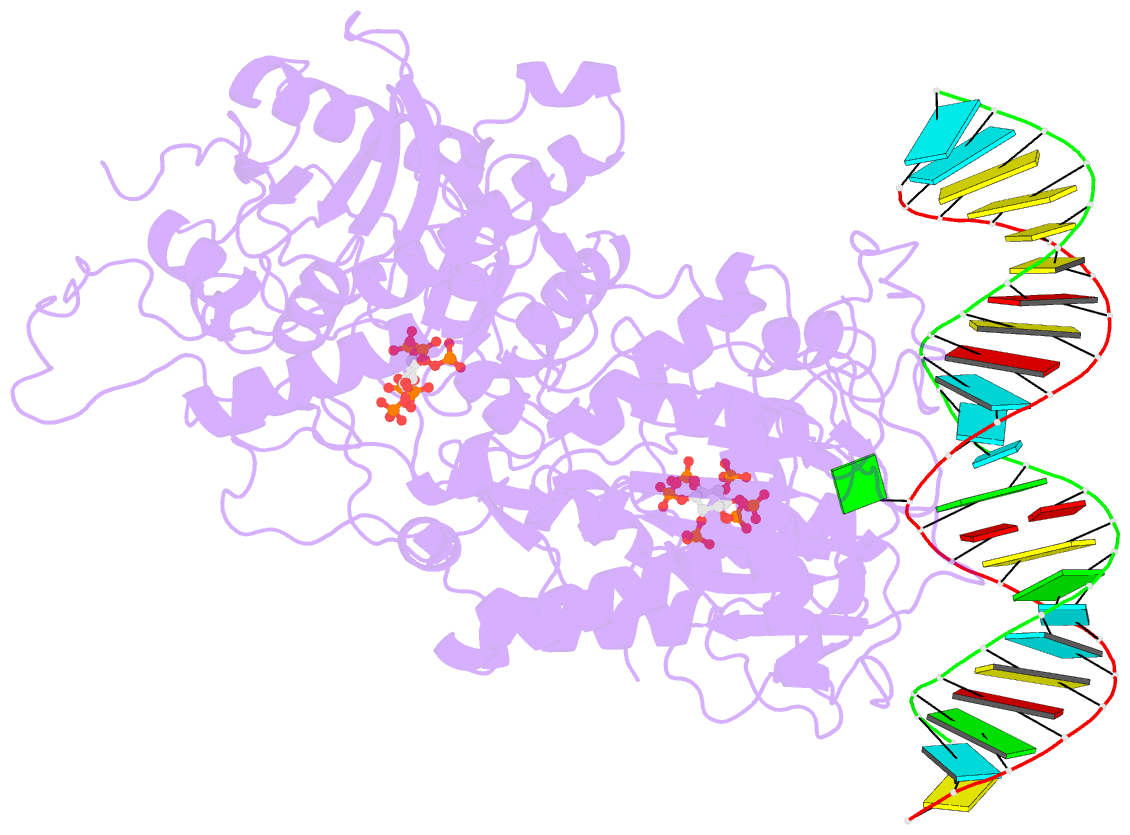Summary information and primary citation
- PDB-id
- 5hp2; DSSR-derived features in text and JSON formats
- Class
- hydrolase-RNA
- Method
- X-ray (2.983 Å)
- Summary
- Human adenosine deaminase acting on dsrna (adar2) bound to dsrna sequence derived from s. cerevisiae bdf2 gene with au basepair at reaction site
- Reference
- Matthews MM, Thomas JM, Zheng Y, Tran K, Phelps KJ, Scott AI, Havel J, Fisher AJ, Beal PA (2016): "Structures of human ADAR2 bound to dsRNA reveal base-flipping mechanism and basis for site selectivity." Nat.Struct.Mol.Biol., 23, 426-433. doi: 10.1038/nsmb.3203.
- Abstract
- Adenosine deaminases acting on RNA (ADARs) are editing enzymes that convert adenosine to inosine in duplex RNA, a modification reaction with wide-ranging consequences in RNA function. Understanding of the ADAR reaction mechanism, the origin of editing-site selectivity, and the effect of mutations is limited by the lack of high-resolution structural data for complexes of ADARs bound to substrate RNAs. Here we describe four crystal structures of the human ADAR2 deaminase domain bound to RNA duplexes bearing a mimic of the deamination reaction intermediate. These structures, together with structure-guided mutagenesis and RNA-modification experiments, explain the basis of the ADAR deaminase domain's dsRNA specificity, its base-flipping mechanism, and its nearest-neighbor preferences. In addition, we identified an ADAR2-specific RNA-binding loop near the enzyme active site, thus rationalizing differences in selectivity observed between different ADARs. Finally, our results provide a structural framework for understanding the effects of ADAR mutations associated with human disease.





